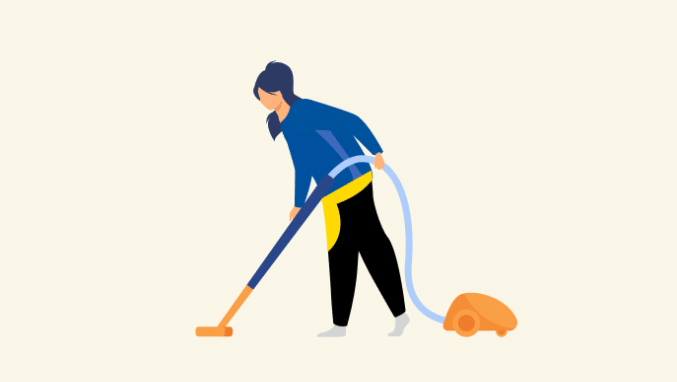Request An Estimate
That unpleasant odor from your dog’s bed means it’s time for a thorough pet cleanup. From rolling in who-knows-what outdoors to shedding fur and bodily fluids, dogs can get pretty stinky. Those foul odors make themselves at home in your dog’s bed and can get even more offensive over time.
If your dog gets wet and lays down for a nap on a dirty dog bed, the ensuing smell will undoubtedly spur you to action! On top of nasty odors, your dog’s fur and dander can mix with dust that gets into the air and creates havoc for allergy and asthma sufferers.
How Dirty Are Dog Beds?
Very dirty. We already know about fur, dampness, bodily discharges, and other odor-inducing culprits. But there can be a lot more going on in your dog’s bed than meets the nose! According to the National Center for Biotechnology Information (NCBI), dogs can carry disease-causing organisms, including bacterial, viral, parasitic, and fungal species.
Although your dog may not seem ill, infections can pass from animals to people when you touch their fur or come in contact with their feces, vomit, saliva, or urine. Many of these disease-causing organisms can live in your dog’s bed for up to 12 months — another great reason to add washing your dog bed to your housekeeping routine. Keep reading to find out how you can keep your dog’s bed disease-free and smelling good.
Can You Wash a Dog Bed?
For most dog beds, the answer is yes, and learning how to wash a dog bed starts with choosing the right cleaners. When you’re washing a dog bed, dog toys, blankets, and other pet items, it’s essential that you use a detergent without dyes or fragrances. While additives in many commercial detergents smell better, they can also aggravate your pet’s skin. Worse, some chemicals in regular laundry detergents are toxic and could make your dog ill if it chews on their bed or blankets.
Always choose a pet-safe natural laundry detergent that doesn’t contain harsh chemicals. Never use any detergents or cleaners for your dog bed that contain the following:
- Chlorine
- Fragrance
- Petroleum distillates
- Diethanolamine
- Bleach
Frequent washings are a good way to reduce airborne pollutants, get rid of foul odors, and give your furry friend a fresher, cleaner place to sleep. As a bonus, frequent washing can remove flea and other insect eggs to prevent an infestation in your home. If you or someone in your family have asthma or other respiratory issues, you may want to take your dog to a groomer for washing.
Prevention for Minimizing Dog Bed Odors and Stains
Regularly cleaning a dog bed is a must for pet owners if they care about the health of their pets and their families. With a bit of preventive cleaning, not only will your home be a healthier place, you’ll be able to keep things fresh between deep cleanings. Use the pet cleaning tips below to maintain a clean and healthy dog bed.
Keep Your Dog Bed Clean Between Washes.
There are plenty of things you can do to keep your dog’s sleeping area cleaner and fresher longer. You can cover the bed with a comfortable blanket that you regularly remove to wash. If your dog bed is small enough, enclose it in a large garbage bag to protect it from moisture and stains, then cover the bag with the bed’s cover or a blanket.
- Vacuum your pet bed in between washes to keep dander and dust to a minimum.
- Wipe down the fabric on your dog bed with a mixture of one tablespoon of water and a cup of distilled white vinegar each week.
- Put your dog’s bed in direct sunlight once a week to kill bacteria and remove odors.
- Sprinkle baking soda over the dog bed when it begins to stink, and then vacuum it up.
- Use a waterproof cover to protect the bedding from stains.
- Wash your dog’s paws when they come in from outside to remove dirt and germs.
- Spot clean stains using water and mild liquid dish soap.
A Clean Dog Bed Starts With a Clean Dog
Bathing your dog is one of the best ways to keep dog bed odors at bay and for preventing pet hair from getting all over your home. But be cautious about using just any detergent or shampoo. Many of us have used dish soap or our own shampoo to wash our dogs, but it’s not recommended. “Harsh chemicals aren’t necessary,” assured Terese DeManuelle, a veterinary dermatologist from Portland, Oregon. “A mild hypoallergenic soap that’s formulated for veterinary use is all you need.”
The makeup of a dog’s skin and fur differ from human skin and hair. While dish soap or your favorite shampoo will strip away the dirt and odors, it will also decrease the natural oils from their fur and may irritate your dog’s skin. Dr. DeManuelle says it’s safe to bathe your dog once a week with a shampoo designed for pets, even with the occasional “emergency” washing.
Choose the Right Dog Bed
The most advanced dog beds are designed to minimize odors with waterproof liners, removable, machine-washable covers, hypoallergenic memory foam, and some are even flea and mold-resistant. Besides odor-fighting dog beds, “regular” dog beds come in various fabrics and styles with or without a cover.
Whether you have a washable microfiber dog bed, a bed with water-resistant fabric or one of the odor-reducing models, you have to keep it clean if you want to minimize odors. According to Kathy Backus, DVM, Holistic Veterinary Services, in Kaysville, Utah, a good guideline is to wash your dog’s bed once a week or every two weeks, depending on your dog’s activities and your sense of smell.
Read on to find out how to clean a dog bed, get rid of stains, and reduce allergens caused by a dirty dog bed.
How to Clean a Dog Bed in Five Steps
While you should follow washing directions on your dog bed label, sometimes you have to bend the rules for tough stains and foul odors when you’re learning how to wash a dog bed. Dog beds, dog blankets, and any other upholstery your dog comes in contact with should be washed in water that is at least 140 degrees Fahrenheit to kill odor- and disease-causing bacteria. If your dog bed doesn’t have a tag, use hot water but use the delicate cycle to ensure a gentle wash.
Use a laundry detergent that is hypoallergenic and dye-free to avoid irritation for your dog’s skin. You can use an odor-fighting laundry booster if your dog’s bed is extra stinky — just make sure you rinse it thoroughly to remove residues and chemicals. Small dog beds with removable covers are the easiest to clean and maintain, but even dog beds with covers must be washed periodically. Follow these six tips to get rid of odors and stains on dog beds and keep your pet safe and sound.
1. Remove Loose Dirt and Debris.
Vacuum the dog bed before washing to remove dirt, dust, bits of dog food, hair and other debris. If you have a dog that sheds a lot, a brush attachment may help. Run the vacuum over the interior, exterior and bottom of the dog bed and around your dog’s sleeping area while you’re at it. Vacuuming first not only makes machine washing more effective, but it can also remove unhatched eggs from fleas and other insects. After vacuuming, run a lint roller over the bed, paying particular attention to corners and underneath any trim.
2. Pre-treat Stains.
If there are stains from dirt, feces or urine, an enzyme-powered pet stain remover will dissolve stains or break them down enough for your washer to finish the job. Most spot removers formulated for pets have a light citrus scent or another pleasant aroma. Follow the directions on your stain remover of choice and be sure to give the treatment long enough to work before washing. To protect your dog’s health, never use any cleaner or spot remover that contains bleach or other harsh chemicals.
3. Turn Up the Heat.
For dog beds that are machine washable and fit in your washer, set the washer on the highest temperature setting. If your dog’s bed is especially dirty or stinky, you can run it through a second cycle at the same temperature. If the dog bed is too large for your washing machine, you can take it to a laundromat and use a commercial washer or wash it by hand in your bathtub.
To wash a dog bed by hand, fill your tub with the hottest water possible, deep enough to submerge the whole bed. Pour a ¼ cup of pet-friendly detergent and ¼ cup of white vinegar. The detergent breaks down dirt and stains, and the vinegar neutralizes odors with no adverse health issues for your pet. Let the dog bed soak for at least 15 minutes.
4. Rinse Away Odors and Dirt.
If you’re washing your dog bed in the washer, it’s worth it to run it through the rinse cycle twice even when using a dog-friendly detergent. If you’re hand washing, drain the tub after the bed has finished soaking. Rinse it with warm water and squeeze out as much water as you can. Repeat until you see only clear water when you’re squeezing it out to be sure no irritating residues remain.
5. Dry your dog bed.
If it fits, throw your dog’s bed in the dryer on the medium heat setting and let it tumble until it’s completely dry. If your dog bed is too large for a clothes dryer, let it dry outdoors on a warm day and benefit from the natural sanitizing properties of the sun. Make sure you dry the bed completely to prevent mold and bacteria from growing.
From dollar-store dog beds to high-end pet beds, learning how to wash a dog bed helps eliminate odors, reduce germs and bacteria, and keep your dog happy and healthy. When you need help getting rid of musty pet odors, dirt, and germs in the rest of your home, The Maids is the healthy choice for pet owners. Get a free estimate today and find out how we can keep pet owners’ homes fresher and cleaner.
Request An Estimate










